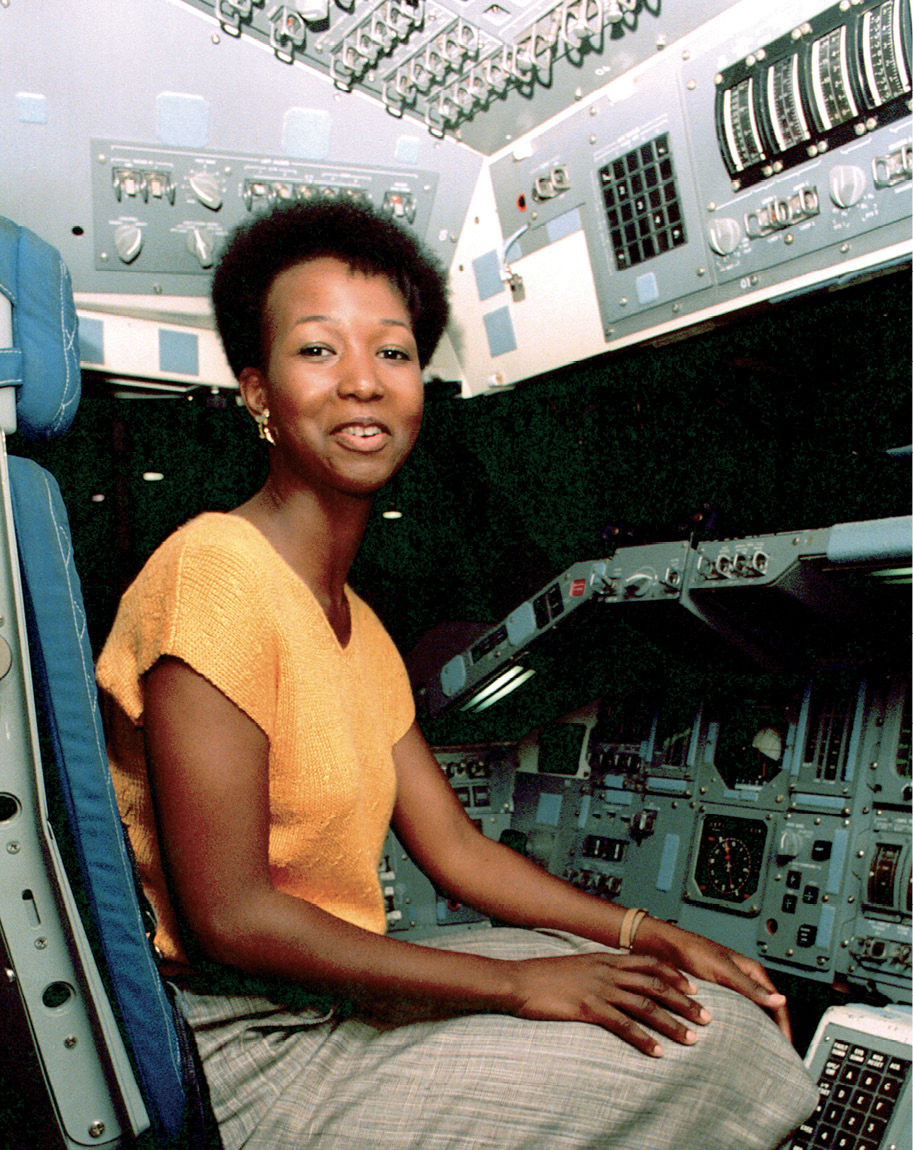Mae Jemison

Chelsea
A few years after Sally Ride first went into orbit, Mae Jemison was accepted into NASA’s astronaut program. As a girl growing up in Chicago in the 1950s and ’60s, Mae had dreamed of going into space. She adored science, and was constantly looking for patterns in stars, watching ants, and even learning all she could about pus after she got a splinter in her finger. Like Sally, she also had interests that stretched beyond science. Mae loved to dance and, in high school, had to make the decision whether to pursue dancing professionally or go to college. She chose the latter and went to Stanford.
After college, Mae went to medical school, then served as a doctor with the Peace Corps, based in Liberia. Later, she worked as a vaccine researcher with the Centers for Disease Control. Even across the world and in a lab, she never gave up on her dream of going into space. As part of the NASA astronaut program starting in 1987, Mae initially worked on launch support activities, including during the period of the 1988 Discovery flight. That was NASA’s first space mission after the Challenger tragedy more than two years before. In 1992, Mae finally realized her childhood goal of journeying into space. While thousands of miles above Earth, Mae investigated how weightlessness and motion sickness affected the shuttle crew, including herself, and conducted bone cell research. As a fellow dance lover, I’ve always appreciated that Mae took not only her medical training into space but also an Alvin Ailey poster (along with a Michael Jordan jersey).
“Never be limited by other people’s limited imaginations. If you adopt their attitudes, then the possibility won’t exist because you’ll have already shut it out.… You can hear other people’s wisdom, but you’ve got to reevaluate the world for yourself.”
—MAE JEMISON
While she left NASA soon after her space flight, Mae remained engaged in the sciences in a variety of ways, from teaching environmental studies at Dartmouth, to working on a satellite company aiming to improve health care delivery in Africa, to becoming the first actual astronaut to appear on the television show Star Trek. She later led NASA’s 100 Year Starship effort to advance the necessary research to bring interstellar travel out of the realm of Star Trek and science fiction and into reality. In 2017, Mae and Sally were two of the women featured in the inaugural Women of NASA LEGO set. My kids aren’t old enough to play with it yet, as some of the pieces are very small, but we have it high on a shelf, ready to go as soon as they are.
Today, more than sixty women have been to space, including fifty Americans who have flown with NASA. While that number is much higher than it was thirty years ago, women still comprise less than 20 percent of the number of Americans who have traveled to space and barely break 10 percent worldwide.
Sally and Mae are among the women who helped make it possible for American girls to imagine themselves in a space suit, on a spaceship, in outer space. Those women include Ellen Ochoa, the first Latina astronaut, who flew on four shuttle flights, logged more than a thousand hours in space, and went on to lead NASA’s Johnson Space Center, otherwise known as Mission Control. They include Sunita Williams, an American astronaut who ran the first marathon in space. (Really! She ran 26.2 miles on the space station treadmill while the Boston Marathon was taking place on Earth.) And they include Peggy Whitson, the first female space station commander and the woman and American who has spent the most time in space: 665 days. Their stories are proof that when one barrier is broken, it can set off a domino effect.
“It’s by pursuing things that [are] extraordinary that we build a better world today. We didn’t get to where we are now by being timid.… Let’s push bigger.”
—MAE JEMISON